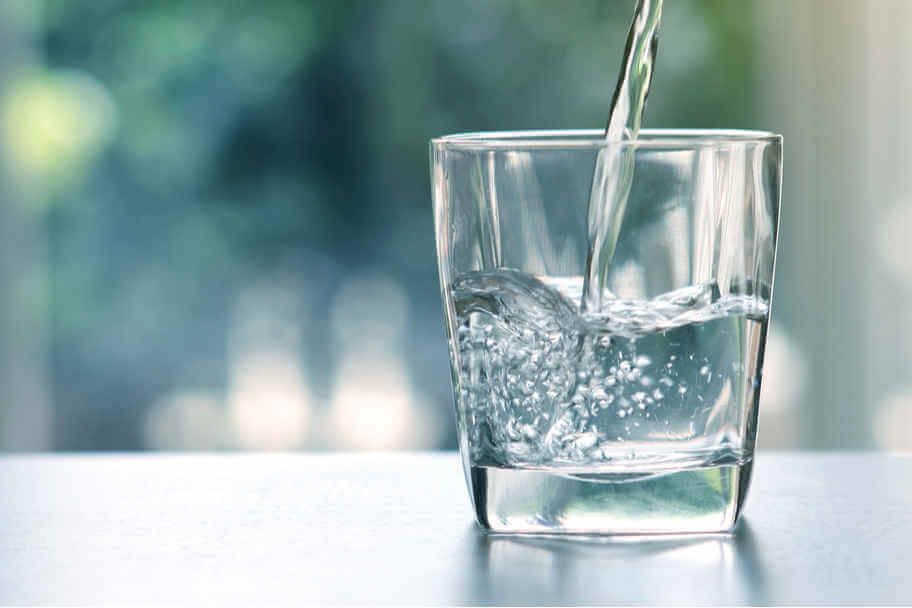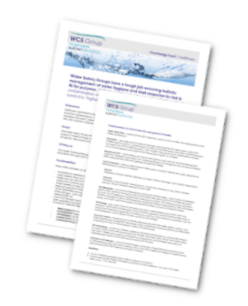Water Safety Plans (WSPs) are now commonplace for many site operators including but not limited to NHS Hospital Trusts and Universities. They are central to critical infection control, public health planning and water safety. The WHO guidelines for drinking water quality recommend water safety plans as the most effective means of consistently ensuring the safety and acceptability of a drinking water supply.

WCS Group sit on many Water Safety Groups for NHS Trusts and act as specialist advisers for site owner / operators looking to implement robust safe drinking water, health management, water quality and disinfection of water to safeguard human health.
Here is a summary of observations and top tips witnessed and shared:
A Water Safety Plan (WSP) is essential to the delivery of safe water in the NHS and other healthcare environments. The Water Safety Group (WSG) has the responsibility for creating, implementing, and maintaining it.
Read moreWater safety principles can be summarised as follows:

Download top tips based on most successful approaches and outcomes witnessed nationally.
Hazards and risks – hazard analysis and critical control points is a well-used and recommended approach. Systematic, designed for preventative risk / hazard identification and management, this should be embedded within a practical water safety and Legionella management strategy.
Control measures – whilst no single measure if often suited or advisable, methods are usually categorised as either physical or chemical. For example;
Operating limits – it is worth remembering that compromises between safety / water hygiene and operating limits for water treatment must be put in place and recorded. There will be decisions to be made about asset life cycle, time of maintenance, refurbishment or removals for example. There will be secondary disinfection decisions. Parameters to keep in mind include time, temperature, dose, pH, water hardness, water consumption, energy consumption, age and complexity of equipment and site(s), accuracy and frequency of data.
Schematics – up-to-date and fit for purpose schematics should describe the water system in place from installed assets to systems / pipework layout for visible and all hidden assets. Schematics should be reviewed on a regular basis and for initial measures or major changes. They should also be updated where remedial works uncover pipework and equipment that was perhaps forgotten or unutilised.
Chemical - Chlorination, Chlorine Dioxide, Monochloramine, Copper-silver ionisation (Cu-Ag), (Silver) Hydrogen peroxide, Titanium advanced oxidisation process (AOP)
Physical - Temperature, Flushing, Materials, Ultraviolet, Tap Design, Filtration, Dead-legs, old or obsolete equipment etc
Monitoring – once control measures have been put in place, system performance and KPIs need to be monitored. Typical options include paper records, Electronic Log Books, Remote Monitoring (state of the art temperature monitoring for Legionella now enables you to add ALL critical systems to one platform with cost saving implications over its lifespan, Process-control and trend analysis.
Corrective actions – Monitoring and consistently referenced data will enable better decision-making, more timely asset life cycle management, less reactive (costly) maintenance, unforced shutdowns and lower levels of operating risk. Keep in mind prioritisation, safety, cost and timescale.
Record Keeping – records are a statutory compliance deliverable and also allow you and specialist advisors to monitor, analyse, assess and recommend timely changes. Most Water Safety Groups have a Water Safety Plan which is flexible and evolutionary but based on a comprehensive and formalised water safety and Legionella policy framework. Records have to be retained for five years.
Validation and Verification – is best achieved through a combination of equipment and manufacturer data, on-site performance data, peer-review evidence, best-in-class KPIs, insights and intelligence supplied by your outsourced specialist water treatment and hygiene company.
WCS Group is a trading name for WCS Environmental Ltd, registered in England and Wales (Number 02184649) at 20 Grosvenor Place, London, SW1X 7HN. Head Office – 17 Wheatstone Court, Waterwells Business Park, Gloucester, GL2 2AQ. WCS Group is a Marlowe Critical Services Company owned by Marlowe plc. 2025© WCS Environmental Ltd.